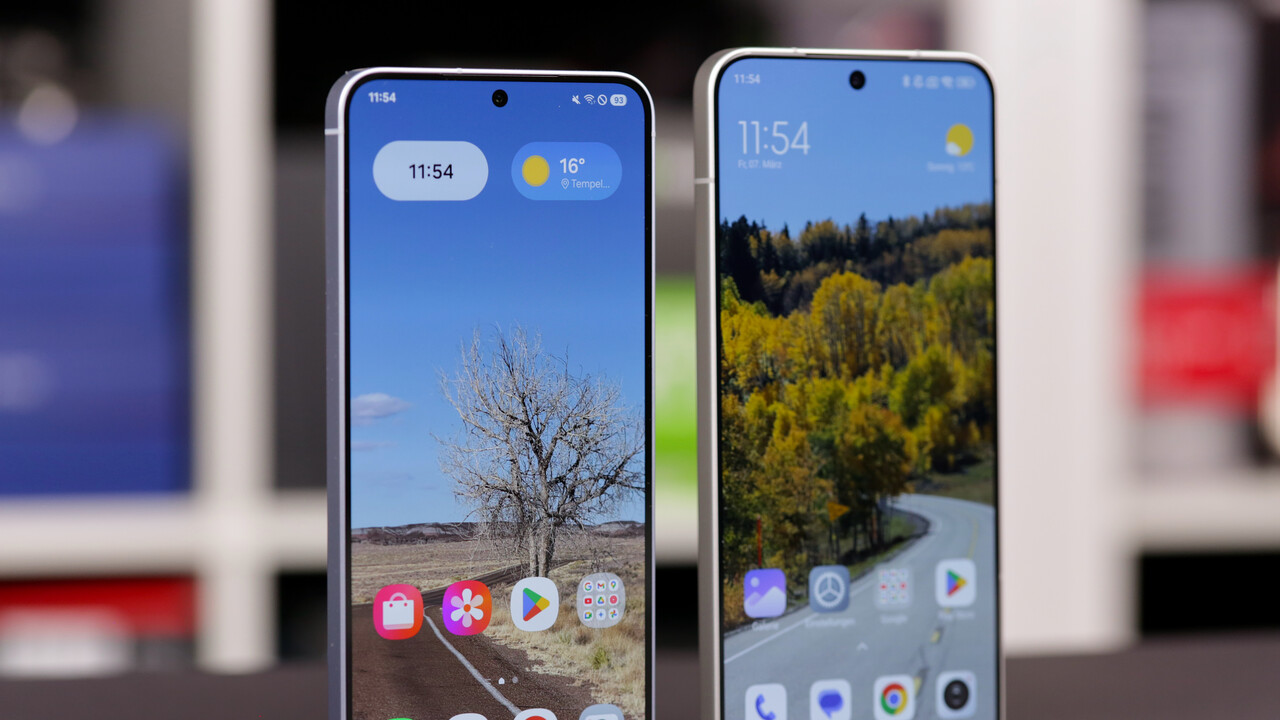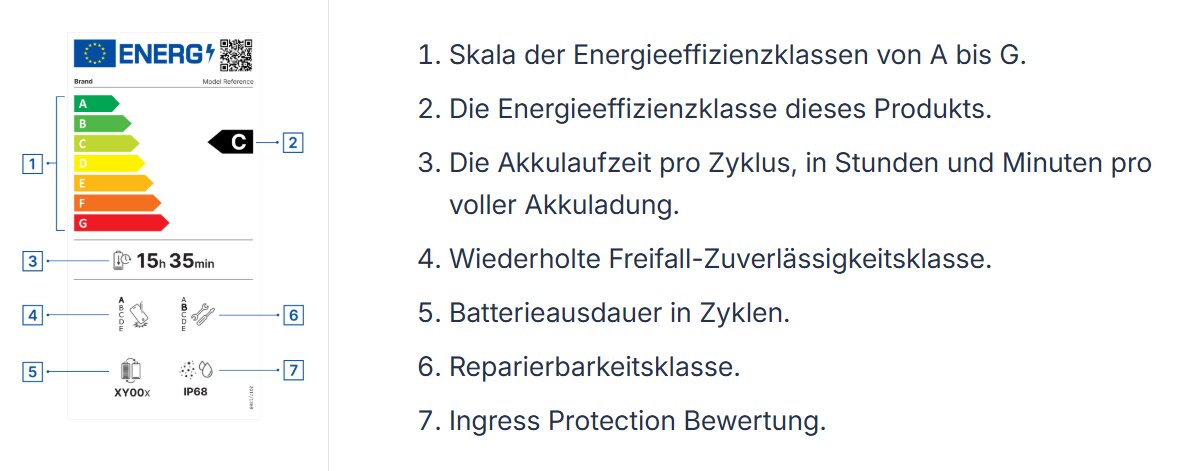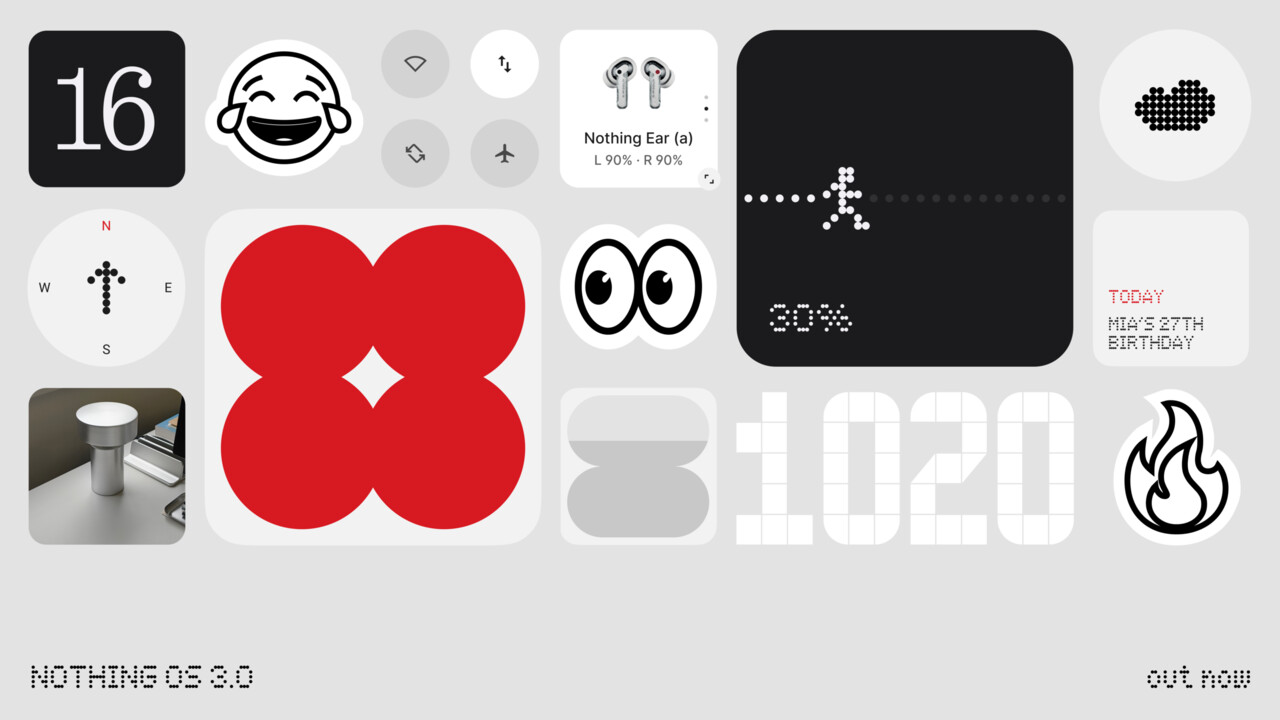New EU Label: Repair and Update Guarantee for Smartphones 55 comments

The EU Ecodesign Ordinance will come into force on June 20, 2025. This also allows for an energy label for smartphones and tablets. This not only specifies the energy efficiency class, but also provides information on battery life, repairability, and device robustness. Software updates must also be offered for a longer period. With the aim of saving energy and resources, which should ultimately benefit the environment, but also reduce costs for consumers, the EU has adopted the so-called Ecodesign Regulation, which will come into force on June 20, 2025.
New energy label with repair class
The guidelines for device manufacturers include an energy label for smartphones, feature phones, corded phones (landline), and conventional tablets. Smartphones and tablets with a flexible display are not subject to fall, and tablet computers that do not have a smartphone-like operating system (Android, iOS, etc.) are also excluded.
The new energy label for smartphones and tablets explained (machine translation)
 The new label not only lists the energy efficiency class from A (best) to G (worst) for other electrical devices, but also provides information on battery life and possible charging cycles. There are also new repair classes ranging from A to E. In addition, the robustness of devices is categorized by a reliability class for repeated free falls (A to E) and the type of protection (IP) against dust and water.
The new label not only lists the energy efficiency class from A (best) to G (worst) for other electrical devices, but also provides information on battery life and possible charging cycles. There are also new repair classes ranging from A to E. In addition, the robustness of devices is categorized by a reliability class for repeated free falls (A to E) and the type of protection (IP) against dust and water.
Ecodesign requirements in detail
There are three basic requirements:
Repair guidelines
Among other things, the product requirements allow manufacturers to supply “critical spare parts” within 5 to 10 business days. After establishing sales of the respective model in the EU, spare parts must remain available for a period of seven years. Professional repair services must also be given unlimited access to the necessary software (firmware). Battery Types and Protection
The batteries used must last at least 800 charge and discharge cycles and then have a remaining capacity of at least 80%. In addition, devices must always have some protection against damage from drops or dust and water penetration.
Longer Update Provision
The periods during which a smartphone is always provided with operating system updates vary greatly. The EU now provides at least a longer minimum period: after the end of the respective device’s life, updates must be provided for at least five years.
2.2 Terawatt Hours Must Be Recorded
The EU estimates that these measures will save approximately 2.2 terawatt hours of electrical energy in 2030.
Fear of Higher Prices
Complying with the aforementioned requirements involves increased costs for manufacturers, such as offering protection courses and long-term updates for cheaper devices. Ultimately, the initial cost could be higher.
Topics: European Union smartphones, tablets, environmental economy. Source: EU

Sarah tracks innovations in smartphones, evaluating their performance, design, and key features.


